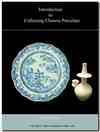Antique Identification
Antique identification or valuation
More than
half of the visitors of this site are looking for an identification or valuation for their antique item(s). Many do really have
little idea of antique Chinese porcelain, or whether their item is
Chinese or antique at all.
Under such circumstances the first step should be to verify if the item
is a genuine antique or not, and whether it is Chinese.
|
There are so many fake antiques, vintage and new items/reproductions out there, that it is vain wanting to know if a piece of porcelain might sell for a huge amount at auction, before even authenticity, quality and age were verified. (More about this below.) There are so many people who bought a recently made copy of a Chinese looking item, hoping their item is valuable. |
Relation of age
and value
Often the question whether an item is authentic, old or
antique is not even asked. However, this is the most important point in an antique identification. Without being either of high quality or made by a famous artisan, any art or craft object has little more
than its purchasing value. What appeals to collectors is the beauty of high quality items. High value is another matter, which also concerns conditions of demand and supply, etc.
Yet, most of the items presented here are either vintage or recently
made (new) items. Many were bought in thrift
stores or flea markets, where real Chinese antiques are
extremely rare. And should there be one, it often takes
more than basic knowledge or feeling to recognize them or their
authenticity.
Items found in such places, even if they are
antique, may at the best have collecting value, but little monetary
value. In other words, in 99% or more of all cases it is futile to even
talk about value. All the great finds reported in the news are made by
people with the pertaining specialist knowledge.
Many vintage porcelain items from China may look beautiful,
and they may be finely worked, but the beauty of the porcelain
does not necessarily increase its value in the eyes of an
antique collector.
Vintage items are only sought if they were
handmade by a famous potter or porcelain painter. And they are
often even more difficult to find than the average antiques.
Please view our home page
for our definition of what is considered "antique"
porcelain.
Manufacturer
identification
With antique Chinese ceramics more often than not it is
impossible to know the actual location or manufacturer where a
specific item was made, unless the mark contains a shop name.
These mark types are relatively rare, however, and appear more often in later porcelain.
In China manufacturer's marks
or factory marks, as they are used in the western sense, did not come into
existence until the late Qing dynasty and republican period, that is in the 20th
century.
|
Although there was a period, mainly in the first half of the
20th century, when factory marks were added to the items of
some porcelain manufacturers, in the later part of the 20th century
many traditionally or old-looking items again either remained
unmarked, or were marked with non-factory or apocryphal marks
(reign marks) from centuries ago. |
Clearly, M and P (mark and period) items that have a datable mark AND were produced in that period are rare. Items from centuries ago frequently do have apocryphal marks from even earlier reigns or eras. We just cannot rely on marks for dating or antique identification!
Making things more difficult
In the second half of the 20th century the major part of the
Chinese porcelain manufacturing industry transitioned from
manual to machine processing.
Today, there are hundreds or thousands of ceramics factories in
China alone, creating probably tens of thousands or hundreds of
thousands of different products every year. This does not mean there is no handmade porcelain porcelain today. These are still made be smaller outfits.
A myriad of products exists, many of which have spurious marks, added for decoration only.
It is often virtually impossible to identify
or find the manufacturer of a specific product. So please be
aware that an antique identification may not tell you who the manufacturer was in many cases.
Go from Antique Identification to Blog/Forum

